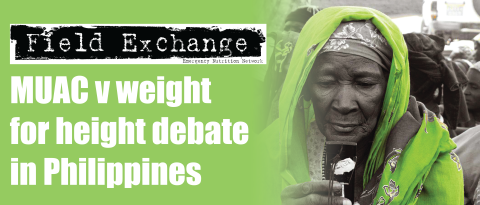Focus on coverage assessment
During the past 10 years, the management of acute malnutrition has undergone a major paradigm shift that has changed the previous inpatient ‘clinical’ model of care into a community-based "public health" model of care. Since 2007, this new model, called Community-based Management of Acute Malnutrition (CMAM) has expanded rapidly and is now implemented in over 55 countries worldwide.

Wide area survey during SQUEAC's stage 3 in Gassi (Mali)
In the old clinical model, the main determinant of impact was the quality of the inpatient medical and nutritional care provided in the centres and hospitals. By contrast, in the CMAM model, the key determinants of impact are the degree to which interventions access people early in the course of their disease and the ability to reach as many of those affected as possible. This is a profound shift that requires an equivalent change in the protocols and indicators used to implement and monitor programmes. Previously in the clinical model, impact was achieved using in-depth medical and nutritional protocols and results were monitored using clinical outcomes indicators. Now, the simplicity and robustness of the CMAM treatment protocols are such that so long as the simple basics such as ready-to-use therapeutic food (RUTF) are available and those afflicted by acute malnutrition present early and in sufficient numbers, then impact is assured. In the new CMAM public health model, the focus on clinical guidelines has been replaced by protocols to ensure that those who are affected are admitted into programmes early and the clinical outcome indicators have been supplemented by the direct assessment and monitoring of coverage.
The Semi Quantitative Evaluation of Access and Coverage (SQUEAC) coverage assessment method is a new set of tools that draws together access and coverage, the two essential determinants of quality CMAM programming. SQUEAC combines an array of qualitative information about access and the perceptions of CMAM programmes with small sample quantitative surveys. These surveys test hypotheses generated during the qualitative work and establish levels of programme coverage in key geographical areas. This combination both identifies key issues affecting presentation and programme uptake, whilst also establishing the actual levels of coverage attained. Vitally, all this can be done in real time, allowing the tool to be of immediate practical use to tweak programme design and implementation in response to the information obtained.
The key to the success of SQUEAC is diversity, triangulation and iteration, that gradually builds up a picture of the "truth" about programme coverage, whilst at the same time, indicates what practical measures can be undertaken to improve access and coverage. The beauty of the technique is that it combines information that is often routinely collected but rarely used, with other data specifically collected by fast, low resource methods. Directly harnessing existing routine monitoring data to improve impact and program effectiveness greatly increases the cost efficiency of the additional time spent collecting new data, thereby decreasing the time and resource overheads required to implement SQUEAC.
SLEAC (Simplified LQAS Evaluation of Access and Coverage) was designed to fill a gap in the early SQUEAC methodology regarding the method's ability to assess overall programme coverage. This gap has now been addressed in SQUEAC and SLEAC has been adapted as a tool for assessing coverage over wide areas. As CMAM shifts from a donor-funded emergency intervention into a routine part of primary health care programming, the resources available to implement these programmes will inevitably decrease. In this environment, low resource methods to increase timely access, monitor coverage, and allow programme design to be proactively refined in view of these, are essential if CMAM is to maintain its effectiveness. In my opinion, SQUEAC is a major step forward towards achieving these goals.
Adapted from foreword by Steve Collins. Technical Reference for SQUEAC and SLEAC Methods, 2012. FANTA.
Imported from FEX website


